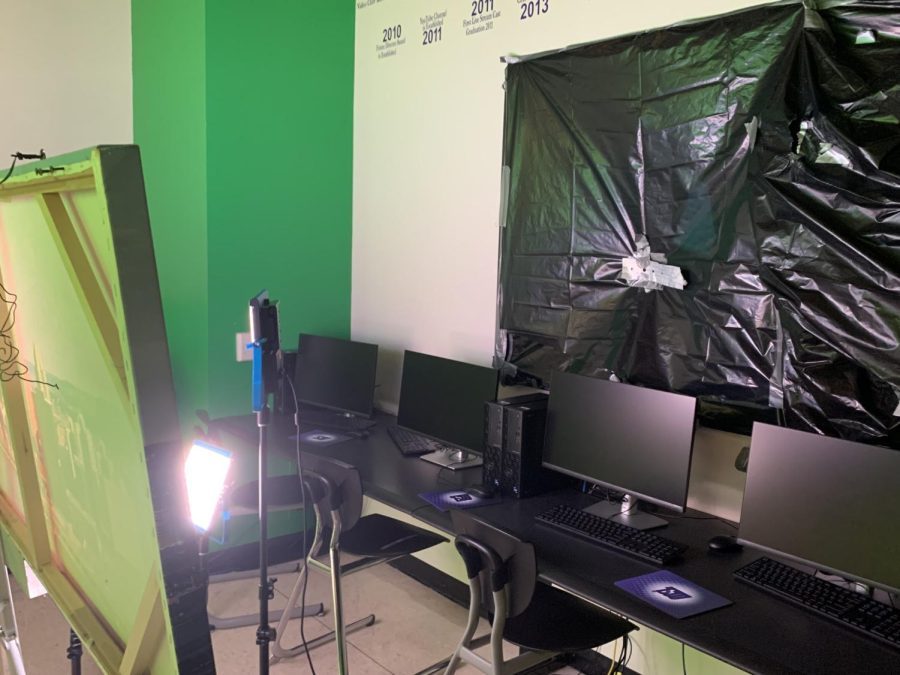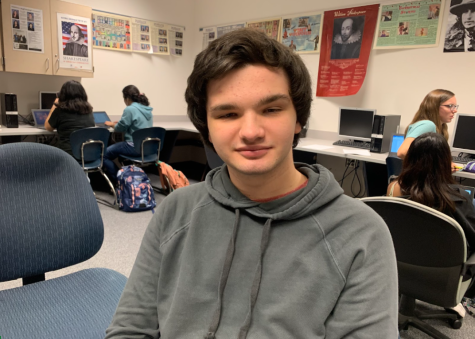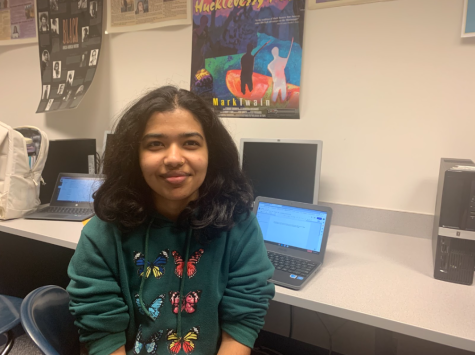Video production class explores ancient, low-tech camera technique
October 11, 2022
About 2,500 years ago, cavemen produced images on cave walls by using the low-tech technique of the camera obscura – and now it’s here at Baldwin High School.
Video production teacher Christopher Tator crafted one of these ancient tools with the help of some of his students.
“Honestly, it’s cool,” Tator said. “I’m a pretty curious person, so when I teach a subject, I try to learn all about it, including the history of it as far back as possible.”
For his classes, Tator taught himself the history of photography and film, leading him to information about the camera obscura.
The camera obscura is a simple technique using four elements: an image, a small hole, a dark room, and a bright light source. The light reflects the image through the hole and into the dark room, casting an inverted image onto the wall.
“There are no lenses or anything of that sort,” Tator said. Because of how the technique works, it allowed ancient peoples, who had no access to modern technology like cameras or film, to see images in clear quality.
Tator described the process of making the camera obscura with his students, in which he used the studio to house the image, and the adjacent control room as a dark room. The windows between the rooms were covered up to make one room dark.
Senior Olivia Seiler was one student who helped with the technique.
“The process was a lot of trial and error, especially trying to get the image to focus,” she said. “I think it’s really cool, especially in regards to history. I think it was cool to have a first-hand experience.”
Freshman Ava Faust described how making the camera obscura helped her with video production class.
“It helped me to learn how to take photos correctly, and the right way to edit films on different platforms.” she said.
Tator highlighted how this ancient technology has links to other subjects in school.
He described how the image projected by the technology represents the way that the eyes interpret images – linking it to biology. For art and history, this technique was used by many Renaissance artists, such as Leonardo da Vinci.
“Outside school, it shows how the world is so unique and so interesting. How things work and how you can project an image onto a blank wall without using technology,” Tator said.
In fact, anyone can use the technique at home.
Sophomore Carter McKee described how he accidentally created a Camera Obscura in his own home.
“It took me like 30 minutes to do. I just cut a hole in my blackout curtains,” McKee said.
McKee saw an inverted image on his wall, and decided to investigate – leading him to the tool without using any technology.
Tator shared the message he wants everyone to take from the camera obscura.
“Slow down. You don’t need technology,” he said.




